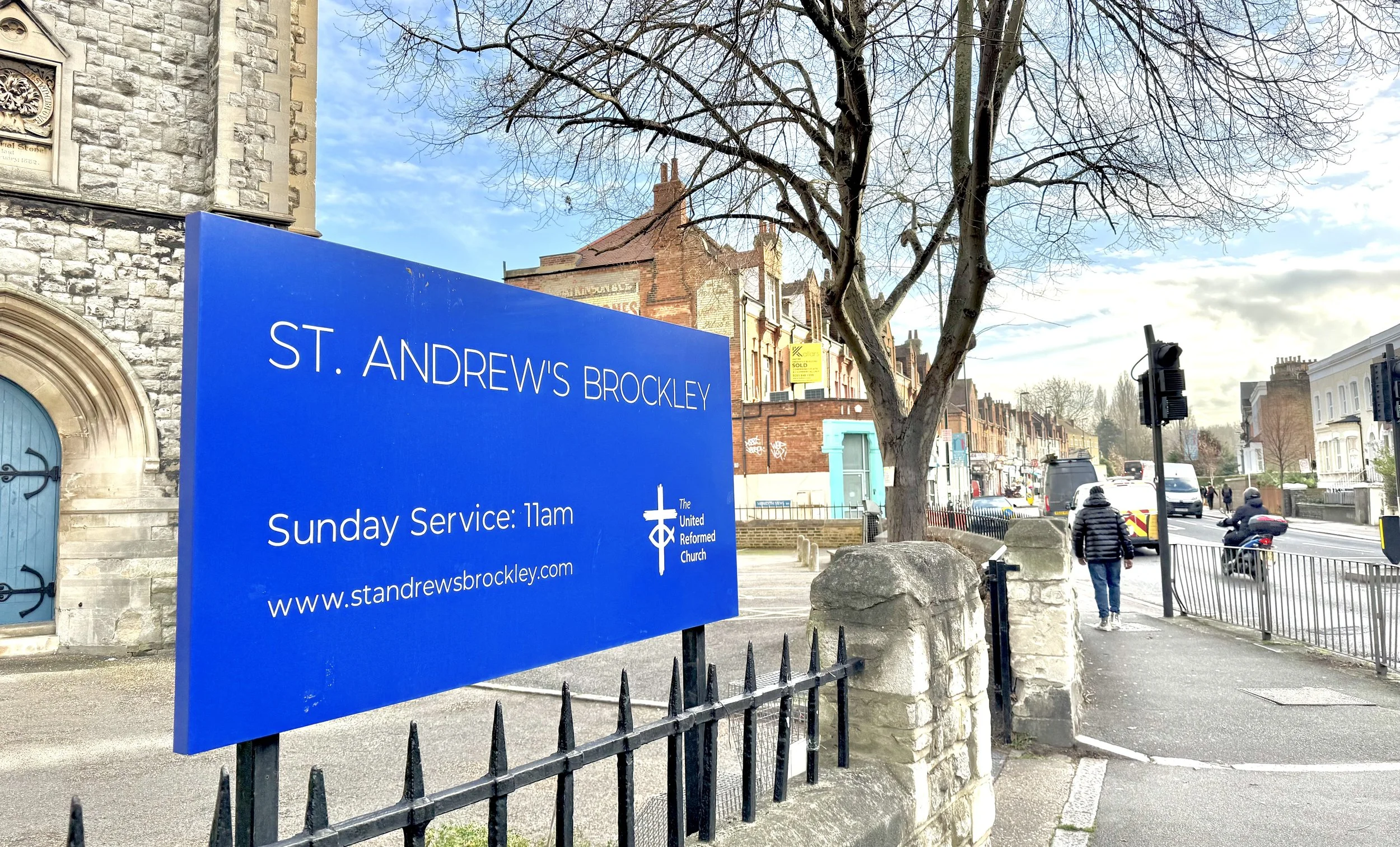The Community that we serve:
Brockley was once a small settlement on the Lewisham side of the boundary between Lewisham and Deptford, but it now stretches from Lewisham Way to Forest Hill. The name Brockley is derived from "Broca's woodland clearing", a wood where badgers are seen (broc is the Old English for badger) or Brook (Stream) by a wood (Ley).
The area was built up in the later 19th and early 20th centuries. Until that time the principal buildings were Brockley Farm, Manor Farm, Brockley Hall (a large private residence), and the Brockley Jack public house, formerly a picturesque wooden building, said, with little or no evidence, to have been a haunt of highwaymen.
Brockley market gardens were famous for their enormous Victoria rhubarb which were fertilised by 'night soil' from London. There were orchards too and some ancient fruit trees survive in local gardens.
In the latter half of the nineteenth century, the Tyrwhitt-Drake family developed the north side of Brockley with grand villas, large terraces and semi-detached houses. The terraced streets west of Brockley Rd were more mixed: "comfortable and poor".
In 1882 the Grade II listed St Andrews Presbyterian Church was built and became the focal point of Brockley Rd as it remains today.
After World War I Brockley began to lose its exclusivity as the wealthy began to relocate to the outer suburbs and the big houses were increasingly sub-divided into multiple occupation.
The Grade II listed Rivoli Ballroom (originally a cinema) dates from 1913 but was remodeled as a dance hall in 1951. It has a unique and outstanding interior, which has featured in many films, videos and fashion shoots. In 2007 The White Stripes rock band played a secret gig here.
Being under the bomber flight path to the London docks, the area suffered significant V-2 rocket and other bomb damage in World War II. The post-war blocks of council flats at the south end of Wickham Rd and at the west end of Adelaide Avenue are evidence of this.
After the Second World War, most of the big houses were sub-divided into multiple occupation. In the 1950s and 1960s these houses provided accommodation for the recently arrived African-Caribbean population. In 1948, five passengers bound for England from Jamaica on the ship Empire Windrush gave Wickham Road as their intended destination on arrival in London. Other migrants came from Turkey, Cyprus, Italy and South Asia (especially Sri Lanka).
From the mid-1960s artists (some associated with nearby Goldsmiths College) started to move into the large and at the time neglected houses on Manor Avenue, beginning the process of 'gentrification' which continues today. The extension of the East London Line, now part of the London Overground network, opened in May 2010. It connects Brockley with North London and is encouraging new residential development around Brockley station.
The St. Andrew’s story:
St. Andrew’s has been at the heart of this community for over 140 years.
Built originally by local people to be a Presbyterian Church, St. Andrew’s (with nearly all of the Presbyterian Churches of England and many Congregational Churches in England and Wales) became part of the United Reformed Church in 1972.
St. Andrew’s was redeveloped in the early 2000’s. As a church, we are always trying to find ways to connect with, and serve the Brockley community, we look forward to seeing you.
Our clergy team is a Minister of Word and Sacraments and a Community Minister:
John came into the Ministry at St. Andrew’s and St. Michael’s in 2018 straight from training at Northern College in Manchester.
In 2022, he was appointed as the United Reformed Church Ecumenical Borough Dean for the London Borough of Lewisham.
Simon has served the URC as a Community Minister for over 30 years in different posts across the North of England. He was most recently in Sheffield, and came to serve our churches, and the communities of Brockley and New Cross in 2022.
We often get asked if there is a bell in our tower. Yes there is but it is not in working order.
The St. Andrew’s bell was cast at Gilbert and Johnson foundry in Croydon in 1884. Gilbert and Johnson cast many really famous bells including the fifty-three Carillon bells in the Peace Tower of the Canadian Parliament in Ottawa.
Our bell has a diameter of thirty seven and a half inches and holds the serial number 788. Over time, it developed a crack from the repeated striking of the clapper against the bell and is no longer able to be rung.
Over the years there have been discussions about installing an electronic bell system to enable the St. Andrew’s bell tower to sing again.















